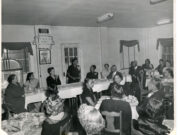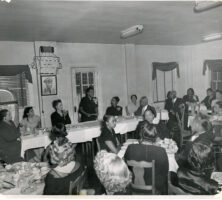The U.S. Constitution grants to the U.S. Congress only a limited range of lawmaking authority. Perhaps the most significant source of congressional regulatory authority lies in its power to regulate interstate commerce—a power broadly defined in such important cases out of Georgia as United States v. Darby (1941) and Heart of Atlanta Motel v. United States (1964).
Another distinctively important grant of authority, however, permits federal legislators to enact “appropriate legislation” to enforce the Fourteenth Amendment’s prohibition on state action that denies persons “the equal protection of the laws” or deprives persons of “life, liberty, or property, without due process of law.” Close on the heels of the ratification of the Fourteenth Amendment in 1868, Congress passed several civil rights statutes, including one that makes it a federal crime for a person “willfully” to deprive another of “any rights, privileges, or immunities secured by the Constitution” if the deprivation occurs “under color” of state law. This statute lay largely dormant for decades, but in 1943 the federal Justice Department invoked it in the Screws case to prosecute three Baker County law enforcement officers, including Sheriff Screws, who allegedly killed an African American by “beating him with their fists and with a solid-bar blackjack” in the absence of provocation following his arrest for the suspected theft of a tire.
After the defendants were convicted in federal court, the U.S. Supreme Court in Screws ordered a new trial, reasoning that the trial judge had not given accurate instructions to the jury on the meaning of the statutory term “willfully.” (Justice William Douglas observed that “even those guilty of the most heinous offenses are entitled to a fair trial,” and in fact, upon retrial, all three defendants were acquitted.)
The key precedent established by the Screws case, however, came in the Supreme Court’s declaration that the taking of the victim’s life had, despite the defendant’s contrary argument, occurred “under color” of state law so that a prosecution under the federal civil rights statute in federal court was permissible. Three of four dissenting justices argued that the beating did not meet the “under color of state law” requirement because the defendants had violated, rather than adhered to, the laws of the state according to the prosecution’s own evidence in the case. The dissenters also urged that permitting a federal prosecution for what they viewed as essentially a local murder would work “a revolutionary change in the balance of the political relations between the National Government and the States.”
The majority, however, concluded that it sufficed to meet the “under color of state law” requirement that the “officers of the State were performing official duties,” whether or not “the power they were authorized to exercise was misused.” In so ruling, the Court opened the door for sweeping invocations of the long-unused Reconstruction-era federal civil rights statutes in federal court actions in later decades. The majority’s ruling also bespoke something more—a rising willingness of the Court to address issues of racial injustice that would, within a decade, produce the seminal school-desegregation decision in Brown v. Board of Education (1954).






